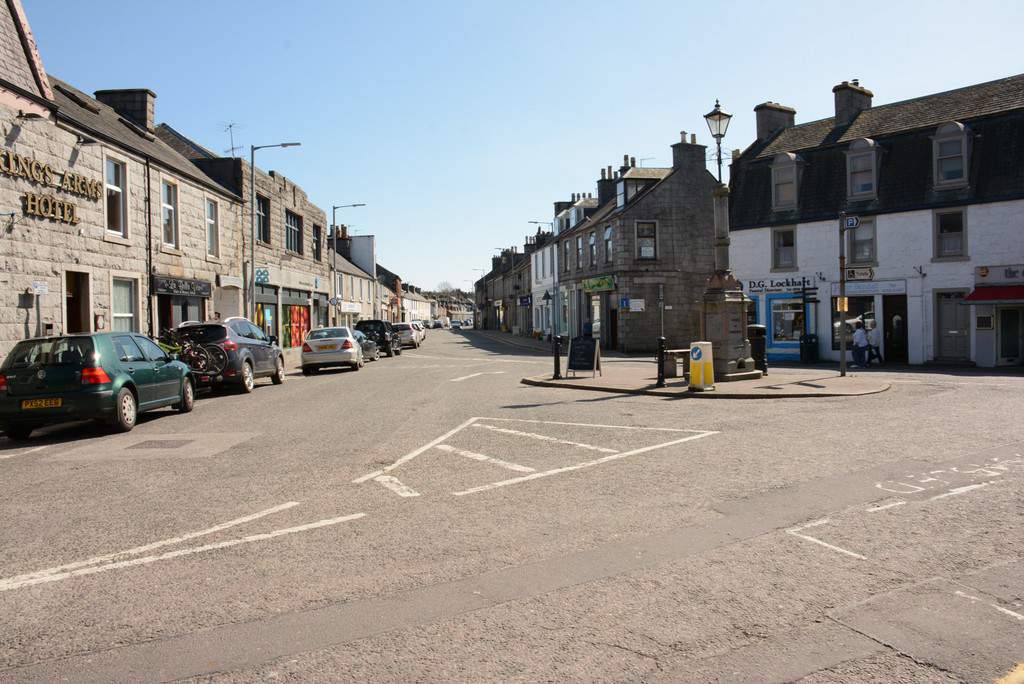The town of Dalbeattie, Dumfries and Galloway was established in the 1790s as a planned town to make the most of the nearby River Urr and the naturally occurring granite (more of that later). Its name comes from the Gaelic for ‘valley of the birch’. Over 4,000 people live there today and enjoy the mix of close community, lively town centre and surrounding countryside.
Read on to find out more about the impact Dalbeattie had on the world in the past and what’s happening there today.
- Dalbeattie is home to one of the 7Stanes mountain bike centres.
Each centre has a stone sculpture that links it to its location.
Dalbeattie’s sculpture is the Heart Cleft Stane, which is made of granite from a local quarry.
- Granite from Dalbeattie was exported all over the world and used in places as far afield as the Thames embankment, Sydney Harbour and a lighthouse at the tip of Sri Lanka.
It wasn’t used in its own bridge over the River Urr, though. That granite came from Kirkgunzeon, four miles away.
It is said that granite polishing was first developed in Dalbeattie and that the skilled workers were in great demand in other parts of the world.
- You could say that Dalbeattie was one of the first places to embrace recycling.
Rags, bones and scrap metal were brought into Dalbeattie Harbour by ship and made into brown paper, fertiliser and shovels.
The now disused port was bustling with horses pulling ships up river to the town.
- Dalbeattie is forever linked to the ill-fated Titanic.
The Titanic’s First Officer, William McMaster Murdoch, was born in the town.
Many of his possessions can be found in Dalbeattie Museum, where you’ll also find a piece of the Enigma machine donated by a woman who used to work at Bletchley Park.
Copyright R.B Photography
- Dalbeattie was once home to a nail factory.
Now it is an art gallery, which exhibits work by local artists and craftspeople.
As well as a nail factory, it was once a Scout Hut and some locals still know it by this name today.
- There are Royal connections to Dalbeattie and the surrounding area.
The Parish of Buittle was controlled by John Balliol, who was King of Scots from 1292 to 1296.
- Motte of Urr, between Dalbeattie and Haugh of Urr, is said to be the most extensive and one of the best-preserved earthworks in Scotland.
The Norman castle was built in the mid 12th century by Walter de Berkeley after Uhtred, Lord of Galloway, gave him land.
Unlike his father, Fergus, who had wanted Galloway to be ruled separately from the rest of Scotland, Uhtred was an ally of William I.
Copyright R.B Photography
- The new Dalbeattie learning Campus opened at the end of 2017.
The site brings together the nursery, primary school and secondary school and includes a dance studio, climbing wall and recording facilities.
The building’s X shape means that there is lots of natural light, fresh air and it’s easy to get outside.
Copyright R.B Photography
- The town’s park, Colliston Park, has an outdoor gym where you can keep fit without getting out the lycra.
There’s also a band stand, a sailing pond and a gentle path if you just want to relax and unwind.
It’s just two minutes’ walk from the town centre, too.
- Many of you will have spotted the unusual buildings and mounds just off the road as you drive into Dalbeattie from Dumfries.
This is Edingham Munitions Factory from the Second World War. Much of it was built by hand by 3000 Irish labourers.
Cordite and nitro-glycerine were the main products and the horses used on site were unshod to make sure there were no sparks from horse shoes.
Article written exclusively for DGWGO by R.Gibblin

